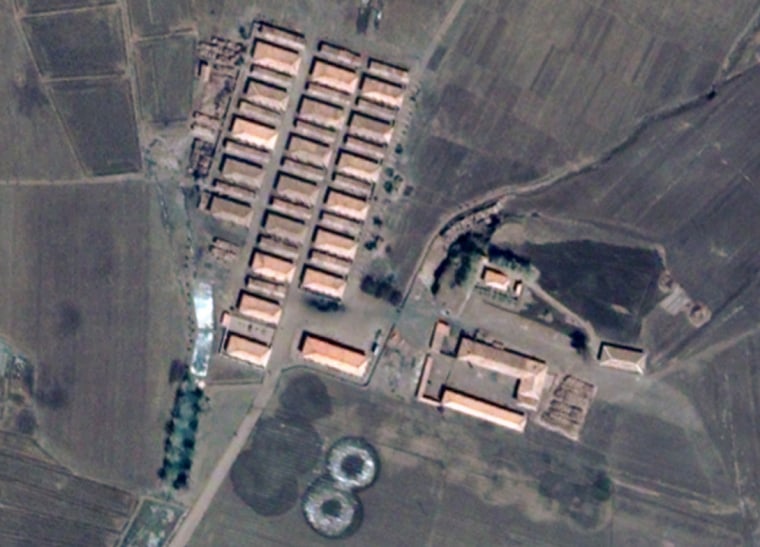Tens of thousands of North Korean prisoners have “disappeared” from an enormous gulag situated in a region where there were known food shortages, prompting fears that they may have starved to death before it closed last year, according to a human rights think tank.
Camp 22, a vast labor camp that sprawled across 700 square miles –- making it larger than Los Angeles –- used to hold around 30,000 prisoners, the Washington, D.C.-based Committee for Human Rights in North Korea (HRNK) said in an August report entitled, "North Korea's Hidden Gulag: Interpreting Reports of Changes in the Prison Camps."
But that dwindled to only 3,000 in the months before its closure at the end of 2012, it said.
At around the same time there were reported food shortages in the area, raising the possibility that large numbers of inmates starved to death, according to investigators from HRNK.
Defectors told them that as many as 8,000 prisoners may have been transferred to other camps, leaving a shortfall of up to 22,000 -- and there are no suggestions that any inmates were released, according to the report.
"North Korea's 2009 currency devaluation (whereby camp authorities were reportedly unable to purchase food in markets to supplement the crops grown in the camps), combined with bad harvests, resulted in the death of large numbers of prisoners after 2010," it said.
The report details the situation in penal colonies called kwan-li-so -- literally translated as “managed places” -- as Kim Jong Un consolidated his power after taking over as leader from his father, Kim Jong Il, who died in 2011.
HRNK, which gathers information from defectors, including former guards and survivors of prison camps, as well as examining satellite imagery, is demanding an inquiry into the fate of the prisoners.
"If even remotely accurate, this is an atrocity requiring much closer investigation," concluded the report's author David Hawk, a former United Nations human rights official and executive director of Amnesty International USA.
HRNK co-chair Roberta Cohen echoed his appeal. "An accounting of the fate and whereabouts of all of North Korea’s political prisoners, including those missing and those who have died in detention should be of highest priority to the U.N. commission of inquiry and the entire international community,” she said in a statement.
"International arrangements should be negotiated for the entry of the International Committee of the Red Cross (ICRC) into the camps,” she said.
Prisoners at Camp 22 mined coal that was shipped to the Chongjin thermal power plant to provide electricity for the Kimchaek steel mills. The camp also had extensive collective farm areas for growing corn, potatoes, beans and numerous vegetables, according to the report.
But while satellite imagery shows that some activity farming and mining activity remains in the area, it stated that it is considerably smaller than in years gone by.
The report disclosed that two camps have been closed in the past year but that up to 130,000 individuals are still being held in penal labor colonies.
"They are deemed 'wrong-thinkers', 'wrongdoers', or those who have acquired 'wrong knowledge' or have engaged in 'wrong associations,'" it said.
"Through this vast system of unlawful imprisonment, the North Korean regime isolates, banishes, punishes and executes those suspected of being disloyal to the regime," the report added.
Detainees are "relentlessly subjected to malnutrition, forced labor, and to other cruel and unusual punishment", the report said, with thousands more forcibly held in other detention facilities.
Some are held under the yeonjwa-je system, a “three generation, collective punishment system,” which can see children held because of the “real, suspected or imagined” political disloyalty of the grandfathers or fathers.
Activists say that as many as 40 percent of the male, female and child inmates die of malnutrition, while others succumb to disease, sexual violence, torture, abuse by the guards or are worked to death. Some are required to work for up to 16 hours a day in dangerous conditions, often in mines or logging camps.
Related:
